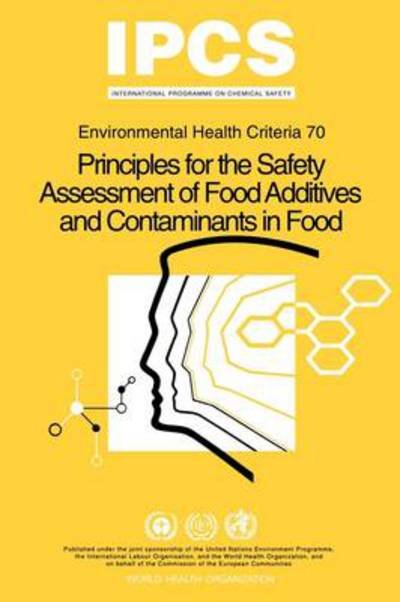
Tell your friends about this item:
Flame Retardants: Tris (Chloropropyl) Phosphate and Tris (2-chloroethyl) Phosphate (Environmental Health Criteria Series)
Ipcs
Flame Retardants: Tris (Chloropropyl) Phosphate and Tris (2-chloroethyl) Phosphate (Environmental Health Criteria Series)
Ipcs
This book evaluates the risks to human health and the environment posed by exposure to three flame retardants: tris(1-chloro-2-propyl) phosphate (TCPP), tris(1 3-dichloro-2-propyl) phosphate (TDCPP), and tris(2-chloroethyl) phosphate (TCEP). In view of their many similarities, TCPP and TDCPP are covered together. Data on all three flame retardants are extremely limited and largely confined to studies of environmental levels and adverse effects detected in experimental animals and in vitro test systems.
The monograph on TCPP and TDCPP describes manufacturing processes and summarizes current uses. The vast majority of TCPP is used in rigid polyurethane foams, with main applications in insulation for buildings and in refrigerator casings. TDCPP is likewise added as a flame retardant to polyurethane foam and has some additional applications as a flame retardant for non-woven fabrics. For both chemicals, studies show that residues are found infrequently and at low concentrations in food items. For TCPP, traces have been detected in industrial and domestic effluents but not in surface water or drinking water. Traces of TDCPP have been detected in sewage effluent, river water, seawater, drinking water, and water sediment and in fish. In view of the low volatility of both chemicals, the report concludes that human exposure from these sources will be very low and will not present an acute health hazard for the general population. Likewise, no adverse effects on the environment are anticipated from the use of either of these flame retardants.
Experimental studies of TCPP in laboratory animals demonstrate low to moderate toxicity by the oral, dermal, and inhalation routes. Tests indicate that the chemical is neither a skin nor an eye irritant. No studies were available to evaluate reproductive toxicity, immunotoxicity, or carcinogenic potential. In vitro and in vivo mutagenicity studies produced negative results.
Toxicity studies of TDCPP show low to moderate acute toxicity by the oral route and low acute toxicity by the dermal route. The report found no evidence of teratogenicity or mutagenicity. A single carcinogenicity study found an increased occurrence of several tumors at all exposure levels tested in both male and female rats. In the absence of data on the mechanisms of carcinogenic action, the relevance of these findings to humans could not be assessed. The limited studies of occupationally exposed workers were judged inadequate for evaluation.
The second monograph evaluates TCEP, a flame retardant with declining uses in the production of liquid polyester resins and in textile back-coating formulations. Traces have been detected in river water, seawater, drinking water, sediment, fish and shellfish, and a few food items. Experimental studies show low to moderate acute oral toxicity. In repeat dose experiments, TCEP caused adverse effects on the brain, liver and kidneys. The report concludes that TCEP is not an irritant to the eye or skin and is not teratogenic, although some adverse effects on the fertility of male rats and mice have been demonstrated. Data indicating low environmental exposures support the conclusion that TCEP poses a very low risk of adverse health effects for the general population. Use of TCEP is not expected to cause any adverse effects on the environment.
| Media | Books Paperback Book (Book with soft cover and glued back) |
| Released | 1999 |
| ISBN13 | 9789241572095 |
| Publishers | World Health Organization |
| Pages | 106 |
| Dimensions | 150 × 7 × 225 mm · 181 g |
| Language | English |

 Christmas presents can be returned until 31 January
Christmas presents can be returned until 31 January











![Cover for Ipcs · Neurotoxicity Risk Assessment for Human Health: Principles and Approaches (Environmental Health Criteria Series) (Paperback Book) [Revised edition] (2001)](https://imusic.b-cdn.net/images/item/original/231/9789241572231.jpg?ipcs-2001-neurotoxicity-risk-assessment-for-human-health-principles-and-approaches-environmental-health-criteria-series-paperback-book&class=scaled&v=1508408769)


![Cover for Ipcs · Arsenic and Arsenic Compounds (Environmental Health Criteria Series) (Paperback Book) [2nd edition] (2001)](https://imusic.b-cdn.net/images/item/original/248/9789241572248.jpg?ipcs-2001-arsenic-and-arsenic-compounds-environmental-health-criteria-series-paperback-book&class=scaled&v=1497043278)







![Cover for Ipcs · Chlorinated Paraffins (Environmental Health Criteria) (Paperback Book) [First Edition, First Printing edition] (1996)](https://imusic.b-cdn.net/images/item/original/814/9789241571814.jpg?ipcs-1996-chlorinated-paraffins-environmental-health-criteria-paperback-book&class=scaled&v=1408649757)

